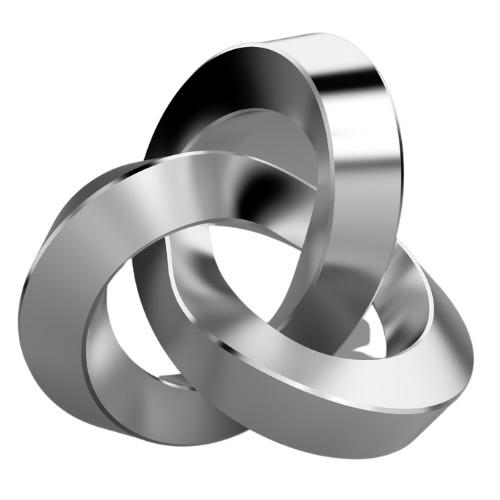Stable Diffusion version 2.0 was released on November 23, 2022, delivering a number of new features and improvements from the v1.0 release.
Quick Link: Download Stable Diffusion v2
Stable Diffusion 2.0 new features
There are a number of new features in Stability Diffusion v2.0 which significantly improve on the earlier release:
New text to image Diffusion models
Stable Diffusion v2.0 includes text to image models trained using a new encoder, OpenCLIP.
Developed by LAION in partnership with Stability AI, the new system improves the quality of the generated images over the earlier v1 release.
It was trained on an aesthetic subset of LAION-5B dataset, which was created by Stability AI’s DeepFloyd team, with additional filtering which removes adult content using the new NSFW filter by LAION.
In this version, Stable Diffusion can generated images with a default resolution of both 512×512 pixels and the larger 768×768 pixels.
Super Resolution upscaler Diffusion models
Stable Diffusion version 2.0 includes an upscaler Diffusion model for enhancing image resolution by a factor of 4. This allows a 512×512 standard image to be upscaled to 2048×2048, or potentially higher still.
Stability AI released this example of a small, 128x128px low resolution image which had been upscaled to 512×512 using this model, and the results are spectacular.

Depth to Image Diffusion Model
Stable Diffusion version 2.0 includes a new depth-guided diffusion model which improves on the previous image to image feature found in v1.0. This unlocks new creative possibilities for designers, and works by inferring the depth of an input image before generating new images using a combination of the text input and this depth information.

In the example above, the initial image (left) is used as the base to create a whole new set of images (block of 4 on the right). This new model can be employed to preserve the structure of image-to-image and shape conditional image generation.
The depth to image module allows the creation of images which are vastly different from one another, but which preserve the coherence and depth of the original image.
Inpainting Diffusion Model
The developers included a new text-guided in-painting model, which is fine tuned using the Stable Diffusion version 2.0 text-to-image. This makes it simpler to easily switch out parts of an image quickly and efficiently.
Optimized for single GPU
Just as before in the original version of Stable Diffusion, version 2.0 is optimized to run on a single GPU. Stability AI say they wanted “to make it accessible to as many people as possible from the very start. We’ve already seen that, when millions of people get their hands on these models, they collectively create some truly amazing things. This is the power of open source.”
We quite agree. Having played with the new version, we can attest that it provides some significant and noticeable improvements on the old v1.0. Once again, Kudos to Stability AI for creating the world’s most powerful, and truly Open Source, AI Art generator.
Is Stable Diffusion v2 better than v1?
In a nutshell, Stable Diffusion version 2.0 is truly awesome. We didn’t expect a major upgrade so soon, and jumping from version 1.5 straight to v2 caught us a little by surprise.
Now, some people on the dark recesses of the interweb have been complaining a little bit about Stable Diffusion v2, with some even saying it’s nowhere near as good as the now deprecated version 1.5.
This was especially so for creating NSFW content, and others complained that named artist style imitation has been adversely affected.
There has been some speculation that certain constraints may have been placed on SD’s models, in order to possibly protect the developers from copyright lawsuits by artists whose styles are regularly used a prompts. “What did you do to Greg“, one user on Discord said, referring to Greg Rutkowski, who’s style has become a kind of defacto-standard prompt for many SD users.
Stability AI founder Emad Mostaque confirmed that there hasn’t been any removal of artists’ images from the model, and gave a little more detail in the Stable Diffusion Discord:

Emad went on to say that the real work now will be on fine-tuning, and bringing some of the missing training back into the LAION model.
In summary, and having played with it for a little while, we realised that, although certain elements of fine-tuning are definitely required in this version, there is a whole lot to the latest upgrade.
We also have discovered that using negative prompts are vital in this version, and if you’re not already using negative prompts, well, you’re probably missing out, and spending way too much time generating flawed models.
We spent quite a lot of time tweaking our prompts, and in the end, we were creating some absolutely beautiful and feature rich imagery using Stable Diffusion v2, but we certainly do understand what some of the communities concerns are.
That said, if Emad’s right, then there is a strong likelihood that a number of the missing elements in the LAION database will soon be re-established, and this will likely see a series of minor upgrades making big improvements to the model. And for that reason, our verdict is…. awesome! Check out more reviews.
Download Stable Diffusion v2.0
You can download Stable Diffusion version 2.0 from the Stability AI repo.
Content keywords: stable diffusion ver 2, stable diffusion second, stable diffusion update, stable diffusion new version, stable diffusion 2, download stable diff, stable diff 2, latest stable diffusion, upgrade stable diffusion, run stable diffusion v2 on pc, download stable diffusion versions, stability ai version 2, stability ai v2, stability ai ver2, stability ai 2.0, stable diffusion stability ai 2, stable diffusion stability ai v2, stability ai stable diffusion ver 2.0;



